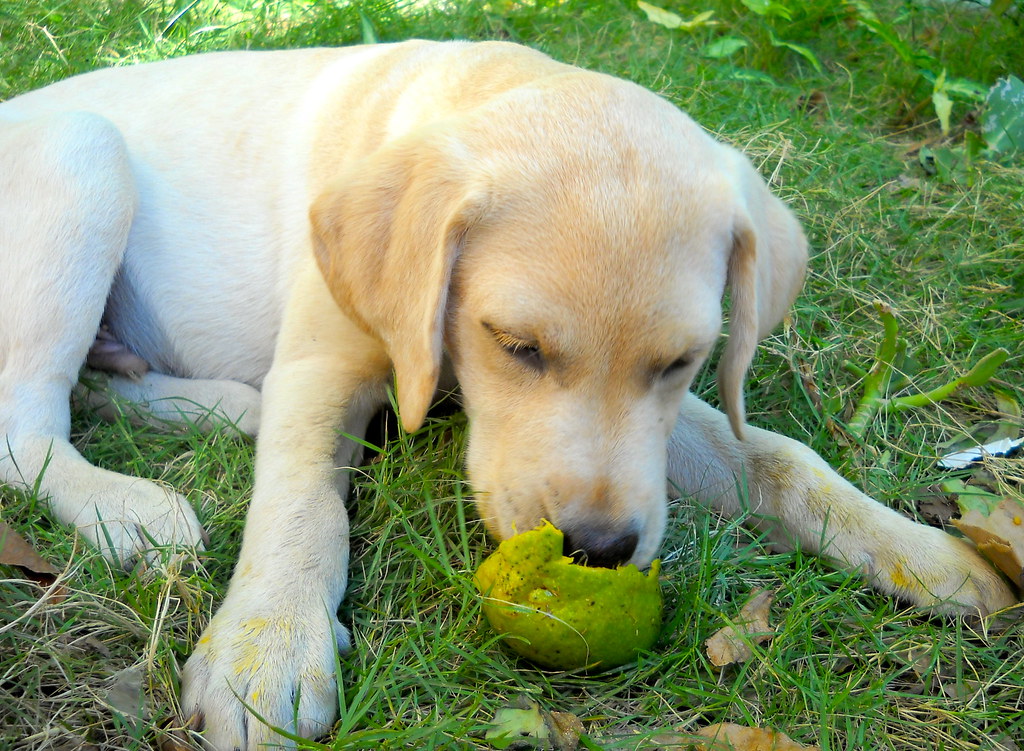Is your dog eyeing that juicy mango you’re enjoying? Mango is a delicious fruit packed with nutrients, but before sharing it with your furry friend, it’s important to know if it’s safe for them. While it’s packed with vitamins and antioxidants, not every part of the mango is safe for dogs. Can dogs eat mango?
Yes, dogs can eat mango in moderation. Mango is safe for dogs when the skin and pit are removed. It provides beneficial nutrients like vitamins A, B6, C, and E, along with fiber that supports digestion. However, because of its high sugar content, mango should only be given occasionally and in controlled portions based on your dog’s size.
In this guide, we’ll uncover whether mango is a healthy choice for dogs, which parts are safe to eat, and how much is okay. Dive in — so you can treat your pup with confidence.
Are Mangoes Healthy for Dogs?
Yes, mangoes can be healthy for dogs when fed in moderation. They’re rich in essential nutrients like vitamins A, B6, C, and E, along with fiber and potassium, which support your dog’s immune system, skin health, digestion, and energy levels. Mangoes also contain antioxidants, which help neutralize harmful free radicals in the body, supporting overall health.
However, you should avoid feeding your dog mango skin and pit, and limit portions due to the natural sugar content. Here’s why each key nutrient in mango is important for your dog’s health:
- Vitamin A: Supports vision, skin, and immune health.
- Vitamin B6: Helps with brain development and hormone regulation.
- Vitamin C: Boosts immune function and provides antioxidant support.
- Vitamin E: Promotes healthy skin and a shiny coat.
- Fiber: Aids in digestion and regular stool production.
- Potassium: Important for muscle function and maintaining electrolyte balance.
Mangoes are packed with natural sugars, which is why they should be given sparingly. Too much sugar can lead to weight gain and upset stomachs, especially in dogs with diabetes. So, while mangoes are healthy, portion control is key.
How Much Mango Can Your Dog Eat?
Dogs can safely eat mango in moderation — it should make up no more than 10% of their daily calorie intake. Portion size depends on your dog’s weight. Always peel the mango, remove the pit, and serve in small, bite-sized pieces when feeding your dog.
| Dog Size | Weight Range | Serving Size (Fresh Mango) |
| Extra small | 2-20 lbs | 1–2 small pieces (½-inch cubes) |
| Small | 21-30 lbs | 2–3 pieces (1-inch cubes) |
| Medium | 31-50 lbs | 5-6 pieces |
| Large | 51-90 | Handful of pieces |
| Extra Large | 91 lbs | Large handful |
Tip: Start small, especially if your dog is new to eating mangoes, and monitor for any digestive changes.
What Are the Risks of Dogs Eating Mango?
While mango can be a healthy treat for dogs in moderation, there are a few risks to keep in mind.
- High Sugar Content: Mangoes are high in sugar, which can lead to weight gain or diabetes if given in excess.
- Digestive Issues: The fiber in mango may cause gas, bloating, or diarrhea if fed in large amounts, especially if your dog isn’t used to it.
- Choking Hazard: The pit is a choking hazard and can cause blockages, so always remove it before feeding mango to your dog.
- Mango Skin: The skin is difficult to digest and can cause gastrointestinal upset or irritation due to urushiol, a compound found in poison ivy.
- Allergic Reactions: Some dogs may experience allergic reactions, such as itchiness or vomiting. Always monitor your dog after introducing mango.
By following proper preparation guidelines, you can safely share mango with your dog in moderation.
Safe Ways to Feed Mango to Your Dog
If you’re ready to treat your dog to a little mango, follow these simple steps to ensure it’s safe:
- Peel the mango completely. Remove all skin and avoid the pit.
- Cut into bite-sized cubes. This makes it easier for your dog to chew and digest.
- Serve fresh and raw. Avoid adding sugar, salt, or seasonings.
- Start small. Begin with a tiny piece, and gradually increase the amount while monitoring your dog for any digestive changes.
- Observe. If your dog shows any signs of discomfort (e.g., diarrhea or bloating), stop feeding them mango.
FAQs
Can dogs eat mango skin or peel?
No, dogs should not eat mango skin or peel. The skin is tough to digest and may cause stomach upset or even intestinal blockages. Additionally, mango skin contains a compound called urushiol, which is the same compound found in poison ivy. This can irritate sensitive dogs, causing allergic reactions such as itching or swelling.
To keep eating mangoes safe for your dog, always peel the fruit thoroughly before serving.
Can dogs eat mango pits?
No, dogs should never eat mango pits. The pit is a choking hazard and can cause intestinal blockages. It also contains small amounts of cyanide, which is toxic if chewed or ingested. Always remove the pit before feeding mango to your dog.
Can a dog eat dried mango?
Yes, dogs can eat dried mango in small amounts, but only if it’s unsweetened and free of preservatives. Dried mango is high in concentrated sugar and calories, which can lead to weight gain or digestive upset. For these reasons, dried mango should be considered an occasional treat rather than a regular snack.
When choosing dried mango for your dog, check that it doesn’t contain added sweeteners like xylitol, which can be toxic to dogs.
Wrap-Up
Yes, dogs can eat mango, but preparation and moderation are everything. Mango is a nutrient-rich fruit that can make a tasty, healthy treat when given in controlled portions. Just remember to avoid the skin, pit, and excess sugar. If you’re unsure about introducing mango or any new food into your dog’s diet, always consult your veterinarian — especially if your dog has allergies or medical conditions.



